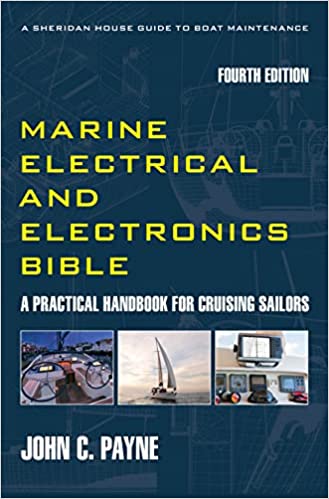What is GMDSS Meaning
The GMDSS meaning is the Global Maritime Distress and Safety System (GMDSS) and this is an internationally mandated communication framework designed to enhance maritime safety and streamline emergency response. Developed by the International Maritime Organization (IMO), GMDSS ensures that vessels can send and receive distress alerts regardless of location, using a combination of satellite and terrestrial communication systems.
For yachts, especially those undertaking offshore or transoceanic voyages, GMDSS compliance significantly improves safety and situational awareness. While not all private yachts are legally required to carry full GMDSS equipment, many choose to adopt key components such as EPIRBs (Emergency Position Indicating Radio Beacons), which is some places are mandatory, NAVTEX receivers, VHF DSC radios, and satellite communication systems. These tools enable rapid distress signaling, reception of navigational warnings, and coordination with rescue services.
GMDSS Meaning
The following Marine Electronics excerpt on GMDSS for small vessel safety and is extracted from my best selling book The Marine Electrical and Electronics Bible 4th Edition. You can order direct from Amazon.
The Global Maritime Distress and Safety System has now been fully implemented. All commercial shipping over 300grt is now on a fully automated and satellite-based communications and safety system.
The large safety problem is that for cruising and sailing yachts, motorboats, trawler yachts are now virtually unplugged from this safety system although its changing.
The 4th Edition of the Marine Electrical Electronics Bible Get your copy and start becoming self sufficient and save money on expensive technician callouts.GMDSS - DO YOU HAVE A 406 MHz EPIRB?
Under the GMDSS the world is divided into areas for search and rescue and these areas are based on the NAVAREA zones. The 121.5/243 MHz and 406 MHz EPIRB units are COSPAS-SARSAT compatible. This is a world-wide satellite assisted SAR system for location of distress transmissions emitted by EPIRB's. The 406 MHz beacons can have a unique identification code in the distress message so that precise vessel data can be included.
Search & Rescue Transponders (SART’s) are devices that are designed for use in search and rescue. The EPIRB is the best boating-safety electronics on board and will put potential rescue vessels in the area, but the SART transponder will accurately localize your position. The EPIRB is generally the first item purchased for the yacht.
GMDSS - ALL ABOUT NAVTEX & WEATHER FORECASTS
NAVTEX is controlled by the various navigation authorities within each of the 16 Navareas who participate in the provision of meteorological and Maritime Safety Information (MSI) navigational safety information for transmission. NAVTEX is the broadcasting of weather and navigational information by teleprinter although these days flat screen displays also do this without the paper.
It is an integral part of GMDSS. Broadcast frequency for NAVTEX is 518kHz and uses a dedicated receiver, permanently tuned to the frequency and an integral printer is used. In normal use, the unit is left on permanently, and can be programmed to receive specific messages. Ranges are typically around a maximum of 250nm. There are some excellent smaller units around such as those from ICS Electronics and I have one of these on my yacht, and as a second step towards GMDSS-communications it is a sensible purchase. If you are buying a used yacht then DSC may already be installed, however make sure you get your MMSI number checked and changed. Weatherfax is still functioning and will be of use to those with HF/SSB radio.
GMDSS DSC RADIO COMMUNICATIONS
Digital Selective Calling (DSC). DSC is at the heart of GMDSS communications. DSC has a number of important features. It utilizes a single VHF channel, specifically channel 70. A digitally encoded message is transmitted instead of a voice one. For many the obtaining of a new DSC VHF is a vexed and expensive one, however it need not be complicated. A GPS is interfaced to provide the transmitted position data for transmission. There are a number of new DSC VHF units available. Remember licensing requirements are different, and a new course and certificate is also required. See full details in my book.
DEEP SEA COMMUNICATIONS
For the offshore the whole question of long-range communications and boating-safety has become a very difficult one. Already the major radio shore stations are closed for HF/SSB operations.
Whilst Amateur or HAM radio is now proving its value and worth to the primarily USA based cruisers who use it, and there are some useful commercial E-mail services on HF/SSB are now available, the whole question is still a hard one to address. Iridium is one option and INMARSAT services are somewhat expensive for cruisers, although a range of cheaper options are now becoming available. If you spend time cruising around Key West then you may only need the short-range DSC radio, if you go further down into the Caribbean something better is required. Ultimately, GMDSS empowers yacht operators with reliable, standardized communication protocols, reducing response times in emergencies and improving overall safety at sea. For serious cruisers, adopting GMDSS principles is a proactive step toward responsible seamanship and global interoperability in maritime safety networks. GMDSS Meaning is about safety for all out on the ocean and sea. More information about boat radios and all About GMDSS
